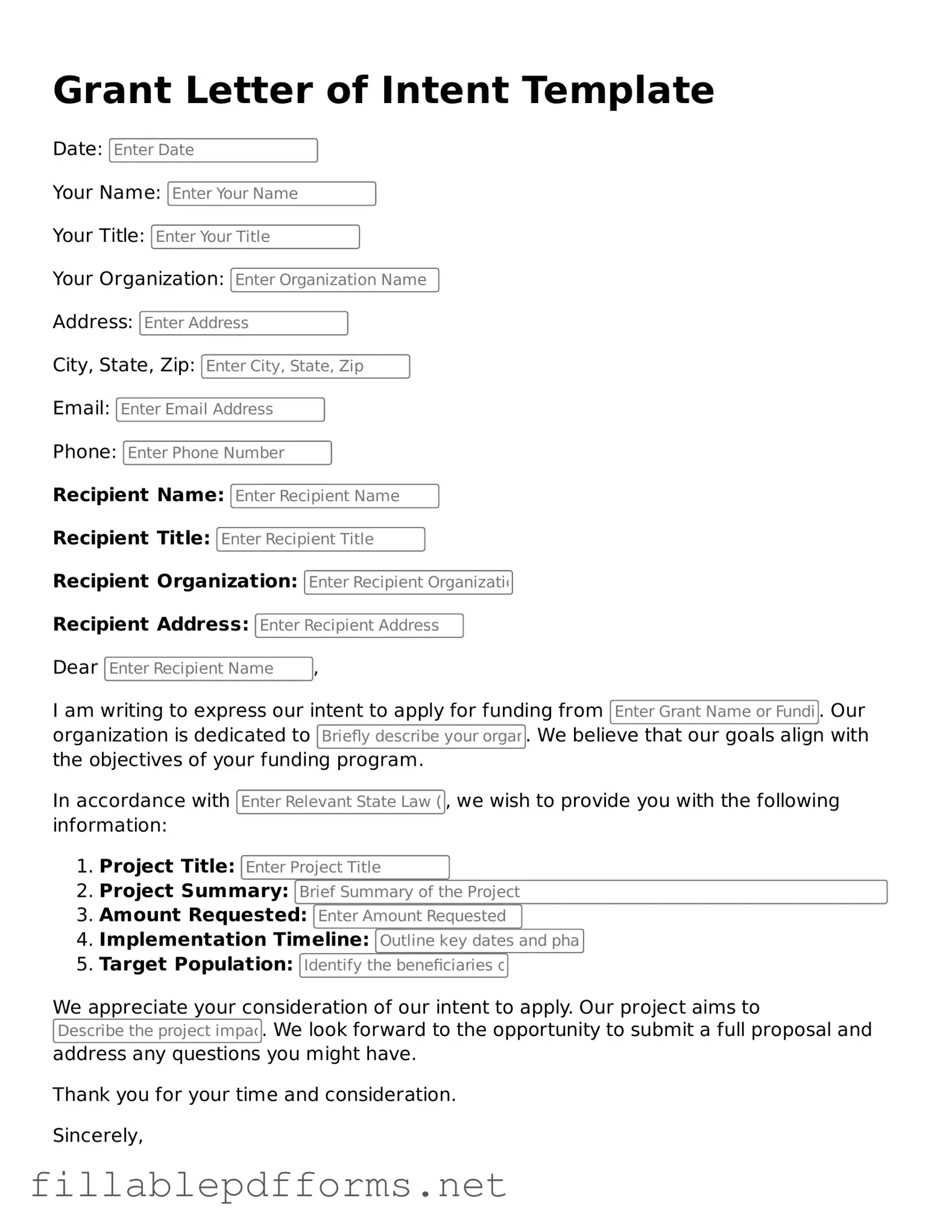Blank Grant Letter of Intent Template
The Grant Letter of Intent form is a preliminary document that expresses an organization's intention to apply for funding. This form outlines the key details of the proposed project and helps funders assess the viability of the application before the full proposal is submitted. By submitting this letter, applicants can establish a connection with potential funders and clarify their project's objectives and needs.
Launch Editor Here
